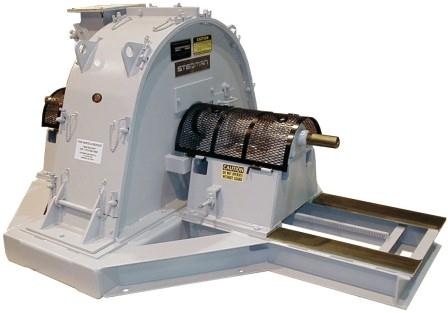June 10, 2015

Michter’s Distillery is expanding its facilities in Shively, KY, to meet growing market demand for Kentucky-style whiskey made from corn, rye, and malt. Located near downtown Louisville, in an area known for its whiskey heritage, Michter’s is situated on 5.6 acres with a 65,000-sq-ft facility. The facility is currently home to all of Michter’s processing and bottling operations, which specializes in super-premium American whiskeys.
Recently, Willie Pratt, master distiller and Pam Heilmann, vice president of production and distiller, took delivery of two cage mills from Stedman Machine Co. of Aurora, IN. Michter’s selected the Stedman F-Series because of its previous experience with Stedman cage mills, which don’t “over crush” the grains. Cage mills have an advantage in grain milling, of cracking the grain just enough to expose the starch, but not over milling. Over processing creates fines and or overheats the material, potentially affecting taste. Another distinct advantage of the cage mill is there is no decrease in output consistency even after long periods of operation.
Stedman has a long pedigree in grain preparation for distilled spirits. The company offers two product lines - cage mills and hammer mills. Each product line has its own features and benefits for a unique fit, depending on the preference of the master distiller. Stedman is able to test typical whiskey ingredients (corn, rye, wheat, malted barley) but also can advise how to approach processing specialty blend ingredients used in some recipes.
Distilled liquor production calls for precision control and mills must be compatible with automated production. Because each ingredient has its own unique characteristics, preparing these materials requires special consideration and equipment with processing flexibility. Changing cage mill speeds is a simple but effective way of gaining process flexibility in one machine. Michter’s process includes variable frequency drives to provide speed control of the cages for precise grain sizing distribution. Materials are fed into the mill automatically by screw conveyor or rotary feeder, and once processed the cage mill output is conveyed from the mill to the storage bin, ready for the next step in the process: distillation, barreling, and maturation.
For related articles, news, and equipment reviews, visit our Size Reduction Equipment Zone
Click here for a List of Size Reduction Equipment Manufacturers
Click here for information about the upcoming Powder & Bulk Solids Canada conference/exhibition
You May Also Like


